Ago C II(W) 1/72 scratch build
8 years 10 months ago #81
by Stevef
Ago C II(W) 1/72 scratch build was created by Stevef
Evening All,
You have all seen this one at club meetings and competitions but I thought that some might like to look at it again. I have also included some short historical notes as this type is not one of the better known aircraft from WW1.
Come to that, are any of the subjects that I choose to model well known? Probably not. Which is one reason why I choose them!
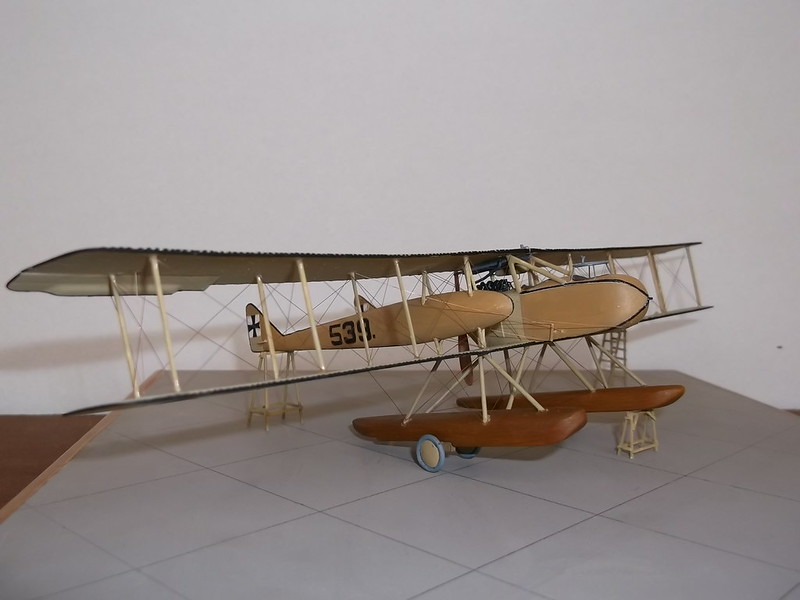
The Ago Fluggesellschaft Gmbh of Johannisthal was established in 1912 as the Berlin branch of the Flugzeugwerke Gustav Otto. Otto was a Bavarian engineer and early pioneer of flight and developed a series of very similar designs known collectively as Doppeldekkers. Unfortunatley for Otto the Prussian air service would not accept the Doppeldekker design for military service as it was considered to be structurally too weak, so although some machines did serve with Bavarian air units, the military market was limited. (Some modellers and other authors have given the designation CI to the Doppeldekker. This is incorrect as these machines were never fitted with a permanent armament). In early 1915 Otto produced a new design based on a pusher layout with a central nacelle as on the Doppeldekker, but with twin booms instead of an open tail. This left the observer with a wide field of fire if armed with a machine gun on a flexible mounting. The booms were made from two moulded plywood shells joined at the centre, giving a much stronger airframe.
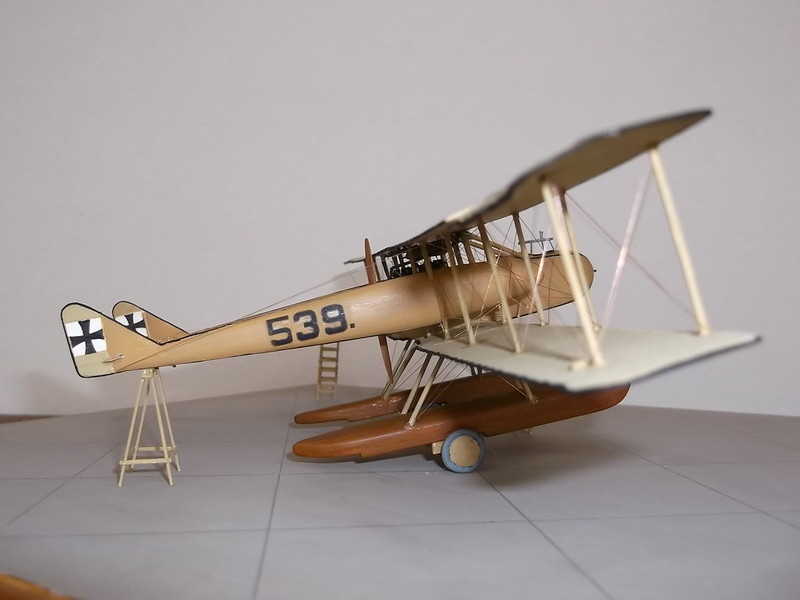
Both the army and the navy ordered land planes in early 1915, and the first CI airframe was delivered to the Army in April of that year.This aircraft became the first machine to receive the C designation, meaning that it was the first armed two-seater, being equipped with a Parabellum machine gun on a ring mounting in the front cockpit. Production machines followed but because Ago was a relatively small company the total number of CI machines produced was probably only around 64. Nevertheless it was a type that proved to be robust and had a long active service on both the western and eastern fronts, the last machines being recorded in service with front line units in April in 1917 whereafter they were used by training units.
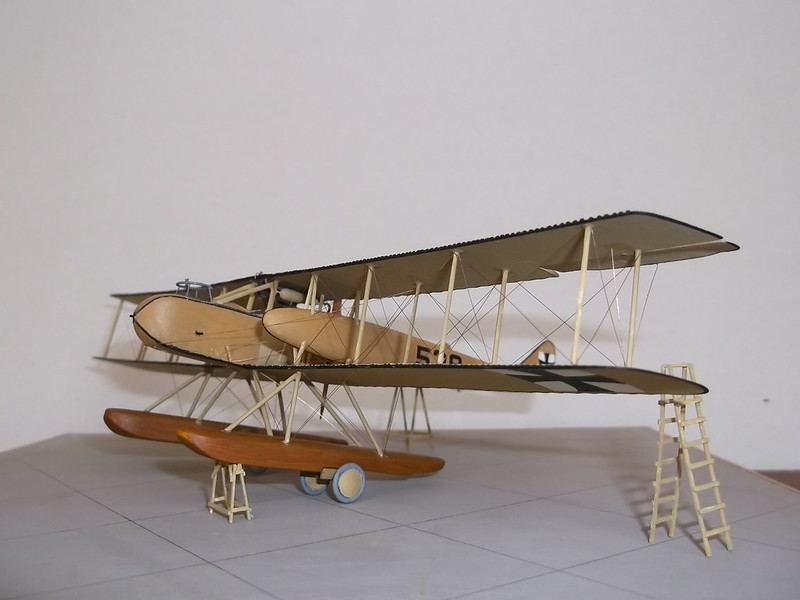
It was popular with crews as it was relatively easy to fly and could withstand damage and still return to an airfield. The Ago types were initially reported as twin engined and more heavily armed than they actually were, but even when they were recognised as single engined pushers, they were treated with respect by Allied pilots. It was only later in their service when tractor fighters were introduced that the inherent weaknesses of the pusher layout became important and the type had to be withdrawn from front line service.
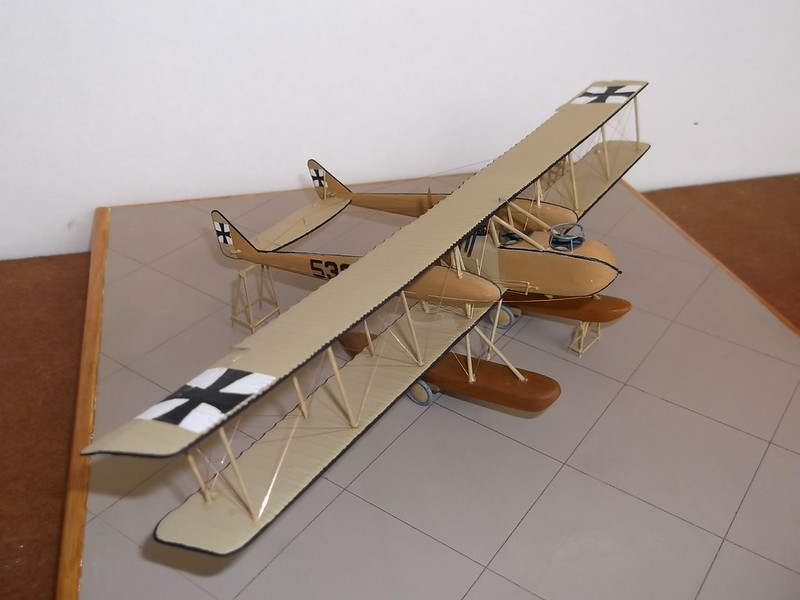
The German navy showed an interest in the type from the start and ordered land plane variants in early 1915. In May 1915 the first floatplane was delivered to the navy where it was used for training in bombing and machine gunnery. The CI types were usually powered by either 150hp Benz Bz III and later 160hp Merceedes DIII engines; early machines had radiators mounted on the nacelle sides, but later the radiators were joined and moved under the top wing. In late 1915 the CI was replaced by the CII with the more powerful Benz Bz IV engine.

Some CII machines had an extended wingspan with a third bay added. The navy accepted several of the extended wing CII's which were fitted with floats and these were used for maritime reconnaissance and bombing, and later training. These seem to have been in service for most of 1916 and may not have been withdrawn from front line service until 1917. The aircraft depicted in the model is of 539 which was photographed at an unidentified naval station, probably in 1916. This machine was powered by a Benz B IV engine and had the gravity tank mounted on the starboard side away from the exhaust manifolds. Agos were delivered and flown painted in a brown dope with the wood booms either left in wood or painted to match the linen.
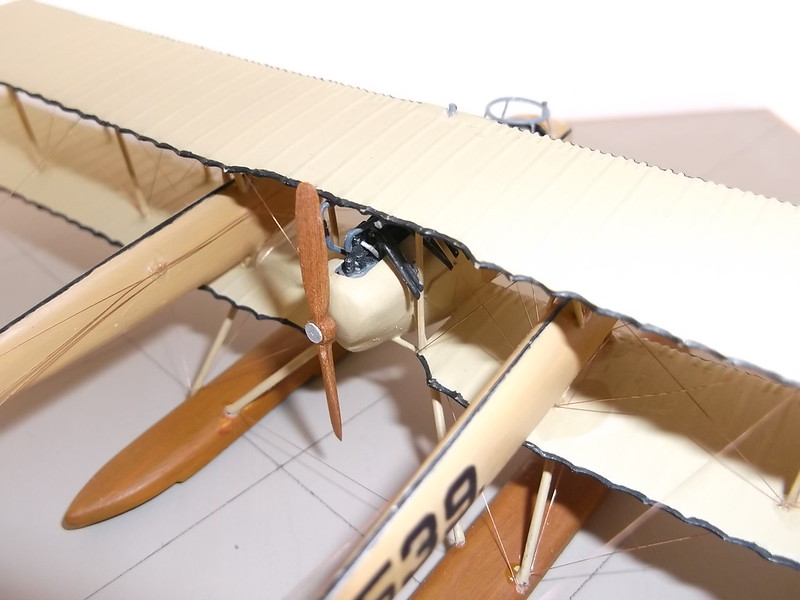
This model is 100% scratch built: the propellor is wood and the rigging is rolled copper wire. The markings were printed on my home computer.
Thanks for looking.
You have all seen this one at club meetings and competitions but I thought that some might like to look at it again. I have also included some short historical notes as this type is not one of the better known aircraft from WW1.
Come to that, are any of the subjects that I choose to model well known? Probably not. Which is one reason why I choose them!

The Ago Fluggesellschaft Gmbh of Johannisthal was established in 1912 as the Berlin branch of the Flugzeugwerke Gustav Otto. Otto was a Bavarian engineer and early pioneer of flight and developed a series of very similar designs known collectively as Doppeldekkers. Unfortunatley for Otto the Prussian air service would not accept the Doppeldekker design for military service as it was considered to be structurally too weak, so although some machines did serve with Bavarian air units, the military market was limited. (Some modellers and other authors have given the designation CI to the Doppeldekker. This is incorrect as these machines were never fitted with a permanent armament). In early 1915 Otto produced a new design based on a pusher layout with a central nacelle as on the Doppeldekker, but with twin booms instead of an open tail. This left the observer with a wide field of fire if armed with a machine gun on a flexible mounting. The booms were made from two moulded plywood shells joined at the centre, giving a much stronger airframe.

Both the army and the navy ordered land planes in early 1915, and the first CI airframe was delivered to the Army in April of that year.This aircraft became the first machine to receive the C designation, meaning that it was the first armed two-seater, being equipped with a Parabellum machine gun on a ring mounting in the front cockpit. Production machines followed but because Ago was a relatively small company the total number of CI machines produced was probably only around 64. Nevertheless it was a type that proved to be robust and had a long active service on both the western and eastern fronts, the last machines being recorded in service with front line units in April in 1917 whereafter they were used by training units.

It was popular with crews as it was relatively easy to fly and could withstand damage and still return to an airfield. The Ago types were initially reported as twin engined and more heavily armed than they actually were, but even when they were recognised as single engined pushers, they were treated with respect by Allied pilots. It was only later in their service when tractor fighters were introduced that the inherent weaknesses of the pusher layout became important and the type had to be withdrawn from front line service.

The German navy showed an interest in the type from the start and ordered land plane variants in early 1915. In May 1915 the first floatplane was delivered to the navy where it was used for training in bombing and machine gunnery. The CI types were usually powered by either 150hp Benz Bz III and later 160hp Merceedes DIII engines; early machines had radiators mounted on the nacelle sides, but later the radiators were joined and moved under the top wing. In late 1915 the CI was replaced by the CII with the more powerful Benz Bz IV engine.

Some CII machines had an extended wingspan with a third bay added. The navy accepted several of the extended wing CII's which were fitted with floats and these were used for maritime reconnaissance and bombing, and later training. These seem to have been in service for most of 1916 and may not have been withdrawn from front line service until 1917. The aircraft depicted in the model is of 539 which was photographed at an unidentified naval station, probably in 1916. This machine was powered by a Benz B IV engine and had the gravity tank mounted on the starboard side away from the exhaust manifolds. Agos were delivered and flown painted in a brown dope with the wood booms either left in wood or painted to match the linen.

This model is 100% scratch built: the propellor is wood and the rigging is rolled copper wire. The markings were printed on my home computer.
Thanks for looking.
Please Log in to join the conversation.
- Clive Creer
-

- Offline
- Administrator
-

Less
More
- Posts: 35
- Thank you received: 2
8 years 10 months ago #82
by Clive Creer
I love the smell of Tamiya Extra Thin in the morning!
Replied by Clive Creer on topic Ago C II(W) 1/72 scratch build
As I have had the pleasure of seeing this model in the flesh, I can say that it is superb!
Well done Steve, another fantastic piece of work from the Foster stable.
Clive
Well done Steve, another fantastic piece of work from the Foster stable.
Clive
I love the smell of Tamiya Extra Thin in the morning!
Please Log in to join the conversation.
Time to create page: 0.098 seconds
- You are here:
-
Home

-
Forum

-
Show & Tell

-
Aircraft

- Ago C II(W) 1/72 scratch build